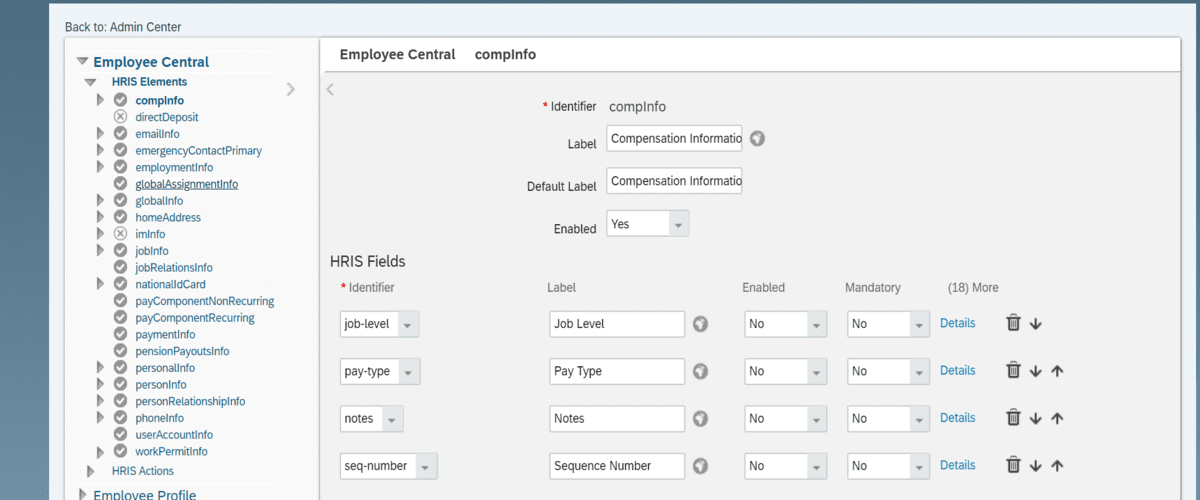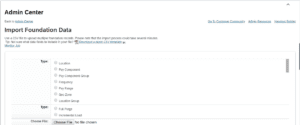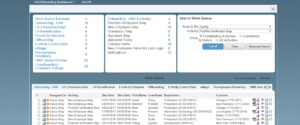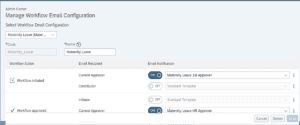A Full HRIS Sync will synchronize ALL current Effective Dated and non-Effective Dated records, across all HRIS Elements, for employees held in Employee Central
his job should only be run if multiple users’ Employee Central data is not correctly sync’ed to Employee Profile. This is usually the case during Implementation Data Load (where sync may have been disabled to load data).
This job should not be schedule to run on a regular basis. It should only be run ONCE if a lot of data is out of sync. Ideally the job should only need to be run once.
Depending on the amount of users in the system, and how many fields you currently sync to EP, the job generally takes a few hours to complete. However, if you have many sync-mappings and hundreds of thousands of users, it might take a little more time to complete.
Employment Status needs to be defined as a picklist. It is recommended to use the default pick list “employee-status” and not use a custm one. You define the picklist for HRIS field “emplStatus” in the Foundation object “eventReason” configuration, in the Corporate Data Model. The external code of Employment Status is important for deciding the Employment Status.
1) Navigate to Provisioning > Manage Scheduled Jobs
2) Click on the “Create New Job” link
3) Job Definition: You need to define the Job Type, Owner and Name. Fill in the following details:
- Job Name – Give it an easy to recognize name, such as “Daily HRIS Sync” or “Daily HRIS Sync Production”, or “FULL HRIS Sync”
- Job Owner – The Job Owner must be a user with Role-Based Permissions (RBP) granted to the EC Source and EP Destination fields – and must have Target Population of “Everyone”
- Job Type – “HRIS Sync”
Occasionally there may be a need to sync an individual employee’s data. This may be because the system did not sync previously an expected historical change. This appears to be a one off issue and you would not want to request that a full sync is run on the whole system for this.
For the HRIS element: jobRelationsInfo, the HRIS field: relationship-type must be defined as a picklist in the Succession Data Model. In order to sync the known relationship types correctly into users’ legacy tables, the dedicated external_codes for system relationship types are defined. The sync logic will regard the external_code for each known relationship type as a fixed value. The system will run the different sync logic (HR Manager/Matrix Manager /Custom Managers/Second Manager) based on the external_code.
- Update ALL Location Foundation Objects to use the correct Timezone value such as “America/Los Angeles (GMT-8:00)“.
- Ensure the HRIS propagation for timezone is set
- Ensure the HRIS Sync Map is configured
- Update the Employee’s Job Info to trigger synchronization of this value to the EP “Timezone” field, so that the correct “Local Time” can be displayed on the Public Profile.
- Ensure there is no onSave rule which is over writing the Time Zone value in Employee Central.
Source: SAP KBA. Tags: #SAPSuccessfactors #RBP #EC #cloud #hr
Do you have questions?
Connect & Clarify
Like It? Share It

Shyam Reganti
Shyam is a Solution Engineer at 3Core Systems Inc, focused on helping clients with HR and Digital Transformation




